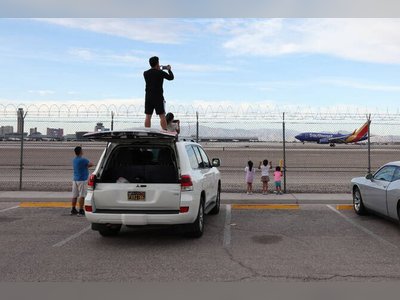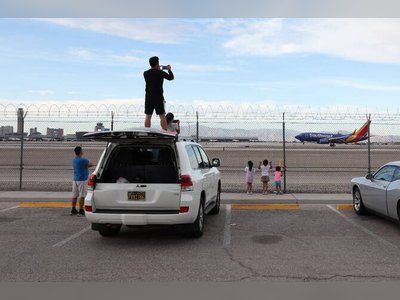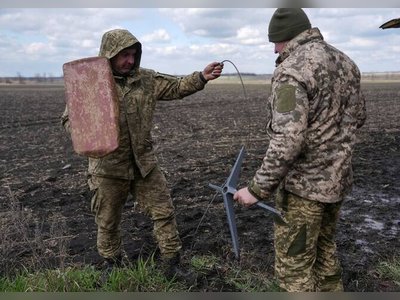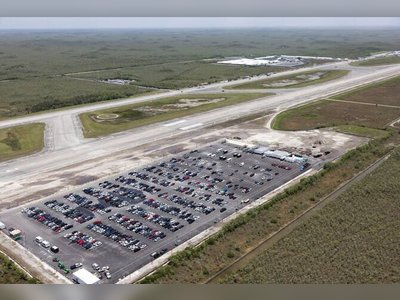
Tropical Storm Co-may Causes Floods and Landslides in the Philippines
Over 25 deaths reported as more than a quarter million evacuated due to continuous bad weather
MANILA: A tropical storm, Typhoon Co-may, is sweeping across the mountainous north of the Philippines, exacerbating a week-long spell of adverse weather.
The calamity has resulted in at least 25 fatalities and prompted the evacuation of approximately 278,000 individuals residing in flooded areas or regions susceptible to landslides.
Co-may made landfall on Thursday night in Agno, Pangasinan province, with maximum sustained winds reaching 120 kilometers per hour (74 mph) and gusts up to 165 kph (102 mph).
As of Friday morning, the storm's intensity had decreased, with sustained winds of 100 kph (62 mph).
The typhoon is intensifying seasonal monsoon rains that have already affected a significant portion of the country.
According to disaster-response officials, most deaths since last weekend were attributed to flash floods, fallen trees, landslides, and electrocution.
Additionally, eight individuals are currently missing.
This particular weather disturbance, known locally as Emong, is the fifth such event to impact the Philippines this month.
More than a dozen additional tropical storms are expected to affect the region throughout the remainder of the year.
In response to these conditions, the government has ordered school closures in metropolitan Manila for the third consecutive day and suspended classes in 35 provinces within the primary northern region of Luzon.
A total of 77 towns and cities in Luzon have declared a state of calamity, which enables the rapid allocation of emergency funds and prevents price increases on essential goods such as rice.
The ongoing inclement weather has forced individuals to seek refuge in emergency shelters or at relatives' homes, with nearly 3,000 residences suffering damages according to reports from the government's disaster response agency.
Travel restrictions have been imposed on sea and air routes within northern provinces that are currently being impacted by the storm or situated along its projected path.
To assist with rescue operations, thousands of military personnel, police officers, coast guardsmen, firefighters, and civilian volunteers have been deployed to support individuals in flood-prone communities or areas isolated due to landslides, fallen trees, and boulders.
Following a meeting with US President Donald Trump at the White House, Philippine President Ferdinand Marcos Jr. visited emergency shelters in Rizal province to distribute food packs to displaced residents.
He later convened an emergency meeting with disaster-response officials to emphasize the need for both government entities and citizens to adapt to climate change as well as prepare for an increasing number of unpredictable natural disasters.
President Marcos stated, "Everything has changed," urging individuals not to assume that they can avoid the consequences of storms, as these events are becoming more frequent and severe.
The United States has pledged to provide military aircraft to transport aid to remote island provinces and rural regions should conditions worsen, according to the Philippines' military.
The Philippines, situated between the Pacific Ocean and South China Seas, experiences approximately 20 typhoons and storms annually.
It is also home to numerous earthquakes and contains around two dozen active volcanoes, making it one of the world's most disaster-prone countries.
The calamity has resulted in at least 25 fatalities and prompted the evacuation of approximately 278,000 individuals residing in flooded areas or regions susceptible to landslides.
Co-may made landfall on Thursday night in Agno, Pangasinan province, with maximum sustained winds reaching 120 kilometers per hour (74 mph) and gusts up to 165 kph (102 mph).
As of Friday morning, the storm's intensity had decreased, with sustained winds of 100 kph (62 mph).
The typhoon is intensifying seasonal monsoon rains that have already affected a significant portion of the country.
According to disaster-response officials, most deaths since last weekend were attributed to flash floods, fallen trees, landslides, and electrocution.
Additionally, eight individuals are currently missing.
This particular weather disturbance, known locally as Emong, is the fifth such event to impact the Philippines this month.
More than a dozen additional tropical storms are expected to affect the region throughout the remainder of the year.
In response to these conditions, the government has ordered school closures in metropolitan Manila for the third consecutive day and suspended classes in 35 provinces within the primary northern region of Luzon.
A total of 77 towns and cities in Luzon have declared a state of calamity, which enables the rapid allocation of emergency funds and prevents price increases on essential goods such as rice.
The ongoing inclement weather has forced individuals to seek refuge in emergency shelters or at relatives' homes, with nearly 3,000 residences suffering damages according to reports from the government's disaster response agency.
Travel restrictions have been imposed on sea and air routes within northern provinces that are currently being impacted by the storm or situated along its projected path.
To assist with rescue operations, thousands of military personnel, police officers, coast guardsmen, firefighters, and civilian volunteers have been deployed to support individuals in flood-prone communities or areas isolated due to landslides, fallen trees, and boulders.
Following a meeting with US President Donald Trump at the White House, Philippine President Ferdinand Marcos Jr. visited emergency shelters in Rizal province to distribute food packs to displaced residents.
He later convened an emergency meeting with disaster-response officials to emphasize the need for both government entities and citizens to adapt to climate change as well as prepare for an increasing number of unpredictable natural disasters.
President Marcos stated, "Everything has changed," urging individuals not to assume that they can avoid the consequences of storms, as these events are becoming more frequent and severe.
The United States has pledged to provide military aircraft to transport aid to remote island provinces and rural regions should conditions worsen, according to the Philippines' military.
The Philippines, situated between the Pacific Ocean and South China Seas, experiences approximately 20 typhoons and storms annually.
It is also home to numerous earthquakes and contains around two dozen active volcanoes, making it one of the world's most disaster-prone countries.










